Tag: All GI Exclusives
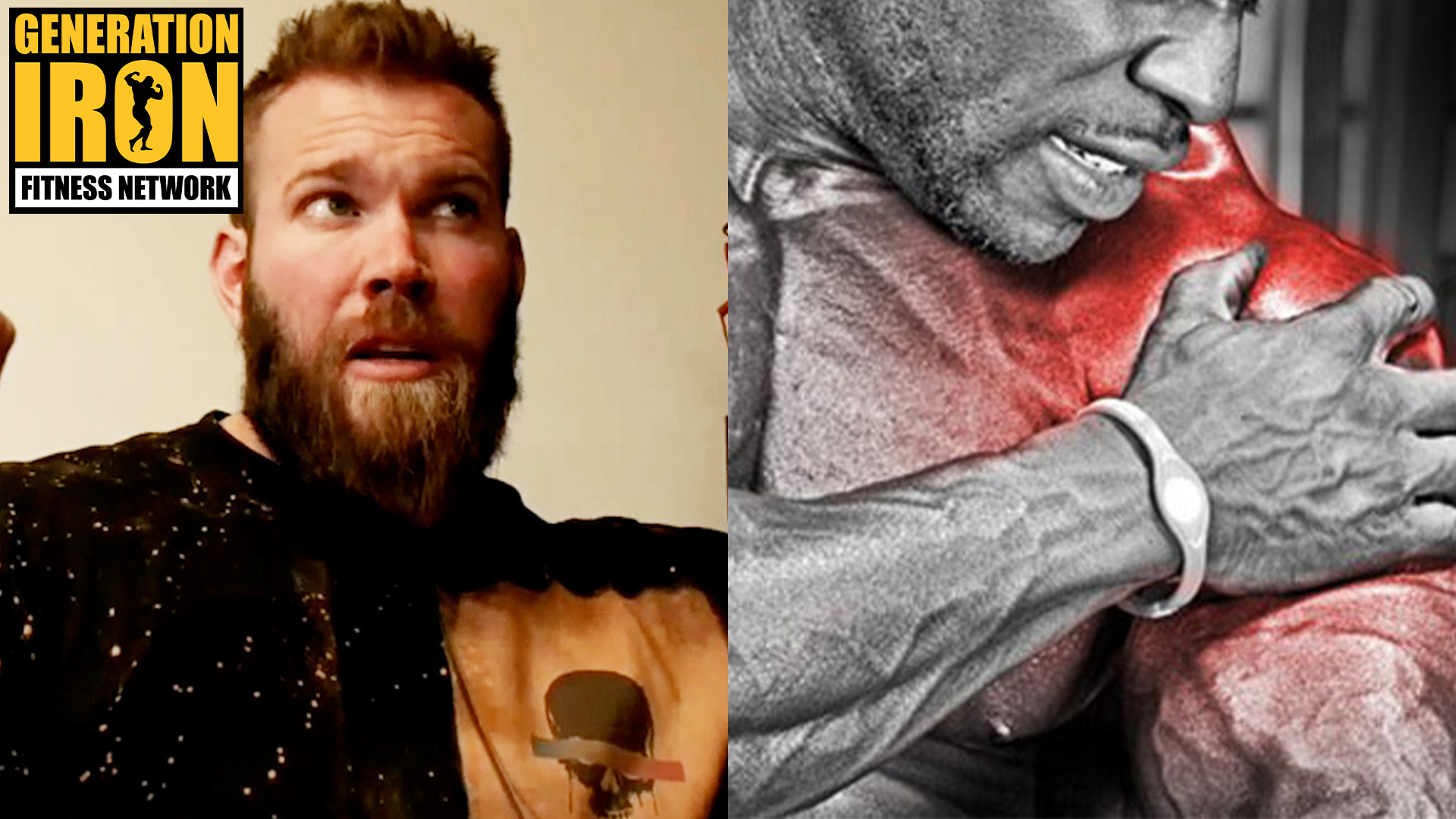
Jordan Shallow: Most Common Gym Injuries & Biggest Mistakes When Training To Failure
[embedded content]
The Muscle Doc Jordan Shallow goes into detail about the most common gym injuries, how to avoid them, and how this affects training to failure.
While a gym and gym equipment is designed to be safe tools and a safe environment for building muscle and strength – injuries certainly can occur. This is the unfortunate truth behind lifting heavy weight no matter the precautions. That being said, there are many injuries that could be avoided. That’s why we’ve turned to The Muscle Doc for advice on how to avoid potential life-altering injuries in the gym. In our latest GI Exclusive, Jordan Shallow details the most common gym injuries, how to avoid them, and the biggest mistakes while training to failure that often lead to injury.
An injury gained during training should be no joke. While it’s somewhat common to get general aches and pains over time. A serious injury can alter the rest of your life. For athletes in professional or competitive sports – it can also drastically alter their career forever. This certainly holds true for pro bodybuilders. An injury keeps a bodybuilder out of the gym. This affects their physique and timing – which could drop them out of a vital show. Even more seriously, an injury such as a muscle tear can lead to a permanent end to a bodybuilder’s career.
That’s why during our conversation with The Muscle Doc Jordan Shallow – we dove deep into the cause of the most common gym injuries and how to avoid them. While speaking to Shallow, he explained that the most common injuries he’s delt with in his years of his career are shoulder and knee injuries. Elbows and hip injuries are quite common as well. This makes sense of course – these are joint areas that, even beyond gym training, get damaged over time with age for most individuals.
While it’s impossible to completely avoid all injury when lifting heavy weight and pushing the body to new levels, there are two key factors to consider to help avoid these kinds of injuries. Jordan Shallow explains that load management and technique are the biggest elements in avoiding injury.
This might seem obvious, poor form and ego lifting lead to injury. But it’s something that can’t be stressed enough. Jordan Shallow also points out that improper volume is not just too much weight. This can also mean too much intensity, too much frequency, or too much density. There is a delicate balance between pushing yourself to growth and pushing yourself to injury. That’s why it is always important to start off slow – especially for beginner lifters – so that you can understand your body’s limits.
In bodybuilding and many high-level strength sports, training to failure is an important aspect towards strength and muscle growth. So how does one train to failure, without pushing too far and injuring themselves? Jordan Shallow explains that training to failure is, of course, important for serious growth. But the problem is the definition of failure in this context. Here’s what Shallow had to say about training to failure in practical terms:
“I think there’s a bigger conversation when ti comes to training to failure which is defining failure. Because failure, depending on the exercise, can be different depending on what the exercise is… Failure is a relative term. And I think the conversation gets so oversimplified…”
He goes on to explain that there can be failure on a technical level vs failure on a physical muscular level. The decision on which version of failure to reach depends greatly on what exercise you are doing and your experience level. The problem with “training to failure” when discussed in general terms – is that this nuance can get lost. Then people are pushing for the wrong things and get hurt.
Jordan Shallow provides very specific examples to further explain his case in this regard. You can watch our GI Exclusive above to get that exact detail as well as his other comments on the most common gym injuries you should be avoiding.
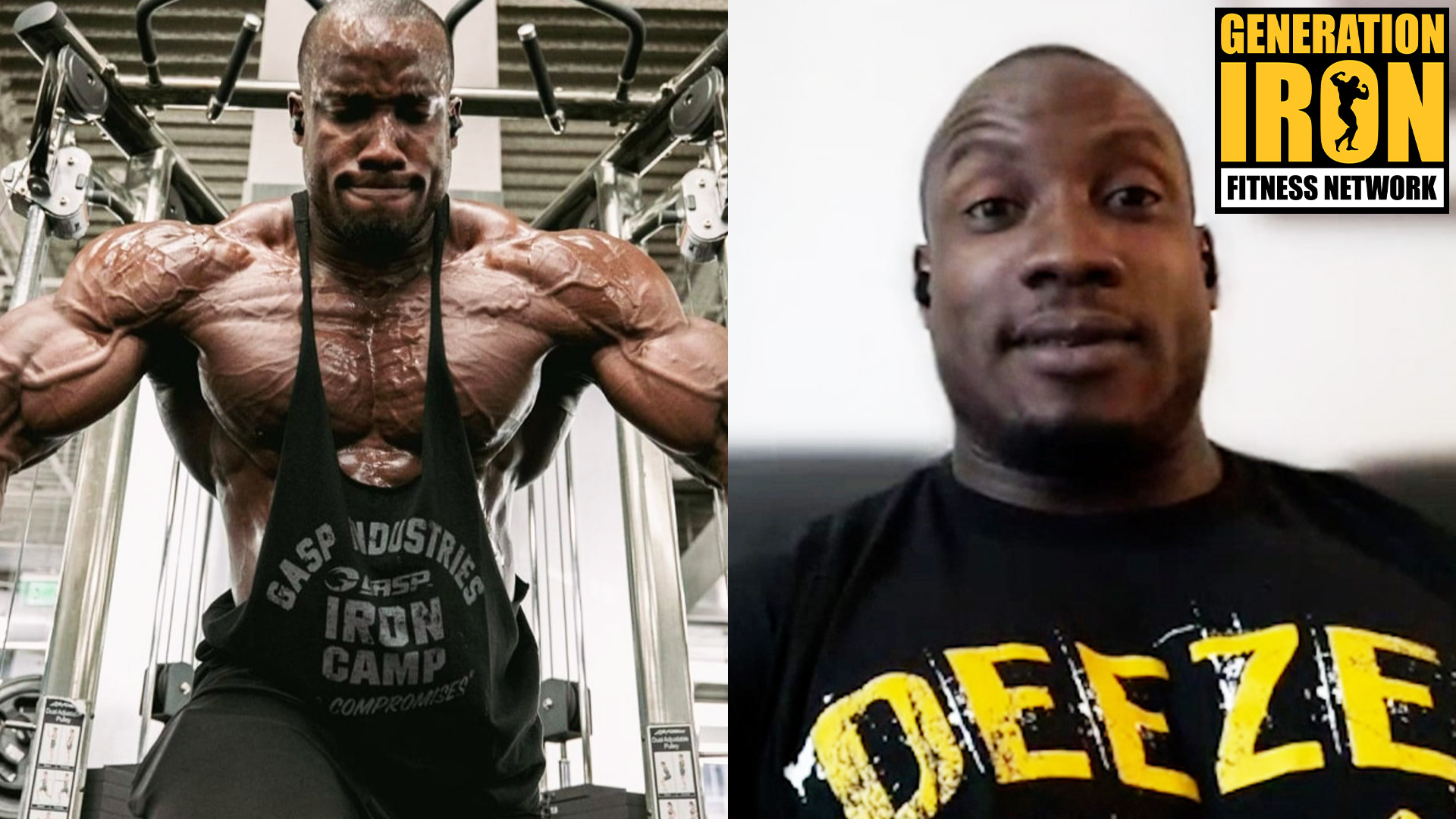
Robert Timms Details The Experience Of Training In Afghanistan
[embedded content]
During Robert Timms military tour – he discovered bodybuilding while training in Afghanistan gyms.
Robert Timms, also known as Mr. Classic Physique, is a standout Classic Physique competitor who showcases a lot of promise in the division. He also has had a rollercoaster past including a cancer diagnosis and some time spent in the military – including a tour abroad in Afghanistan. It’s actually during his tour in the middle east that Timms discovered his love of bodybuilding. In our latest GI Exclusive, Robert Timms explains his experience discovering bodybuilding and what it was like to train in Afghanistan.
For many of us here in the United States, Afghanistan seems like an entire different world. While some of those perceptions are likely based in stereotypes – there’s no denying it’s a country with a completely different culture. One, of course, with a very complicated history involving the US. Robert Timms was a soldier who was stationed in Afghanistan (many years ago before the complete pullout this past year). It’s in Afghanistan that he actually discovered his love of training in the gym and bodybuilding.
During our most recent video conversation, we asked Robert Timms what it was like to train in Afghanistan while touring in the military in comparison to his training life now in the United States. Timms explains how there were two gyms on base. There was the NATO gym and then the “prison gym” as he calls it.
“The prison gym was the gym that was like the old school – like it was rough. It was a rough gym,” Robert Timms states in his interview. He goes on to say that he was 175 pounds upon arriving at the base in Afghanistan.
Through his training in the prison gym – he started developing a love of the process and picked up a lot of basics and tips from his fellow soldiers. But he quickly realized that the way they trained wasn’t enough for what he was seeking. Robert Timms describes himself as a man who likes to deeply understand the very fabric on how things work. This included his body while training.
So after a small rough patch of training where he was plateauing – he decided to stop following along his fellow soldiers and start doing his own thing. While it wasn’t perfect and didn’t lead to a sculpted physique that could win shows – Timms ended up gaining 60 pounds. Bringing his weight to 235 pounds. His body instantly responded to his new actions in the gym as he broke off to explore training on his own terms.
It’s through that isolation on base that Robert Timms was able to, essentially, change his life. He found a new passion that ended up driving his entire life upon returning to the United States. He’s now a pro Classic Physique bodybuilder – and one that is still actively working to become an Olympia champion.
You can watch Robert Timms’ full comments on his experience discovering bodybuilding and training in Afghanistan by watching our latest GI Exclusive interview segment above!
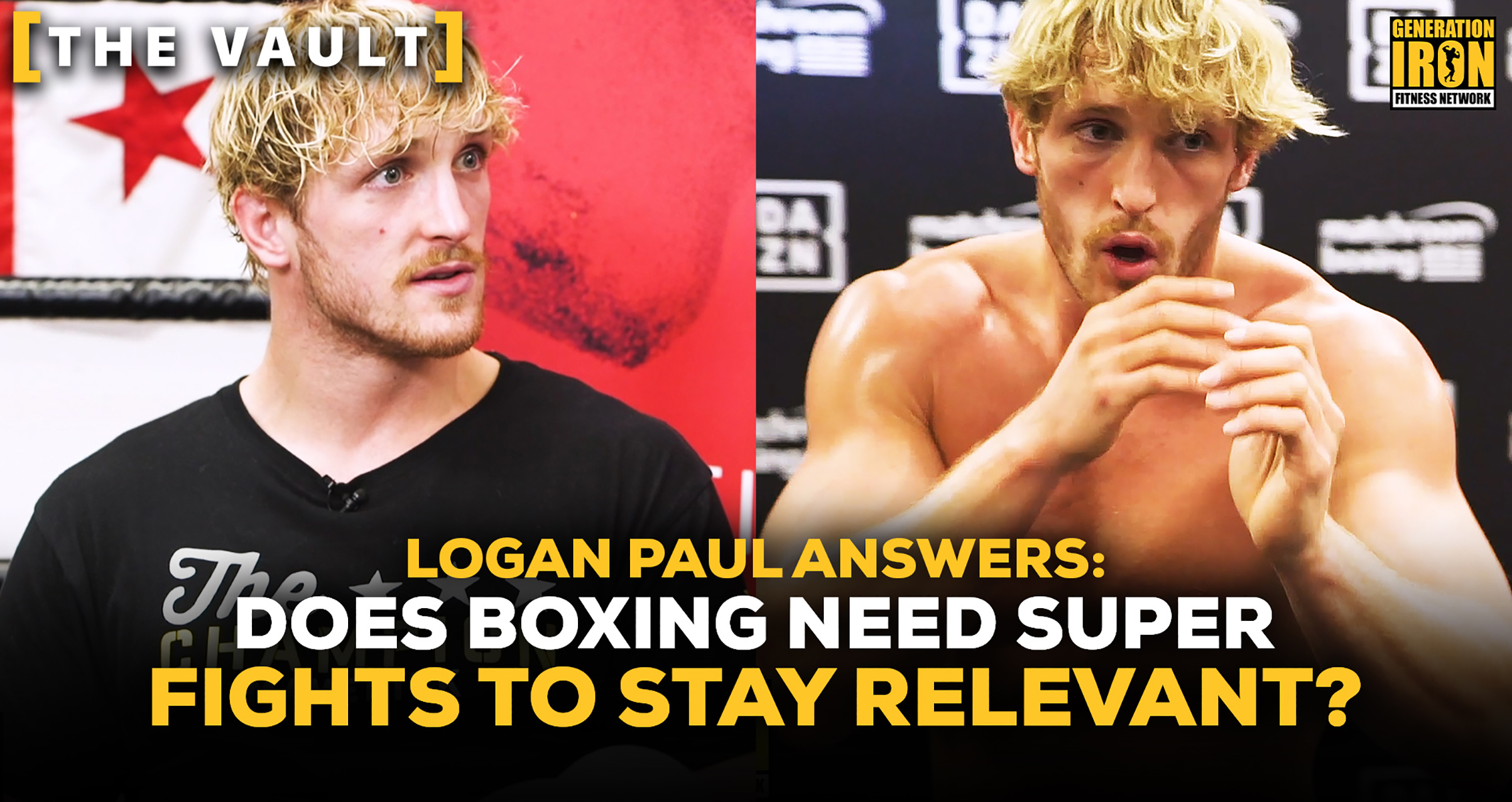
Logan Paul Answers: Does Boxing Need “Super Exhibition” Fights To Stay Relevant? | GI Vault
Logan Paul comments on the rise of “super exhibition” boxing matches and if they are necessary for boxing to succeed for a new generation.
GI VAULT – is an extension of our GI Exclusive interviews. The difference? These interviews come straight out of the Generation Iron vault from the cutting room floor of our feature film documentaries. With over hours of interview footage that doesn’t make it into our final films, we’re now releasing them out into the world.
Last year, Logan Paul faced fellow YouTube superstar KSI in what was called a “super exhibition” boxing match. The event was a massive hit and reminiscent of Floyd Mayweather Jr.’s spectacle fight against UFC superstar Conor McGregor. This was another massive boxing match unprecedented for the sport. Now in 2021, Mayweather will face off against Paul in another “super exhibition” match. In our latest GI Exclusive Vault interview, Logan Paul discusses his place in boxing’s future and whether or not these super fights hurt or help the sport.
When Logan Paul faced off in a sanctioned boxing match against KSI, we had the opportunity to speak with him in a sit down interview. During that interview, we talked about the future of boxing and if these super fights would become more and more common.
Now just about two years later, Logan Paul is entering back into the ring. This time to face off against boxing legend Floyd Mayweather Jr. Dubbed another “super exhibition” fight, we thought now would be an appropriate time to dive back into our GI Vault and pull out the extended interview we had with Logan Paul.
In the boxing fanbase, some have criticized the decision for sanctioned spectacle fights. While they bring in large numbers, there is a worry that the credibility of the sport is on the line. When Floyd Mayweather Jr. fought Conor McGregor – he was fighting an non-boxer. This wasn’t a traditional boxing match. It was a one-off super show. Does this devalue boxing as a legitimate sport and turn it more into stunt entertainment?
Logan Paul doesn’t think so. In fact, he thinks these kinds of super fights are necessary to breathe new life into boxing for a younger generation. He points out that while Conor McGregor is not a boxer, he is a top tier combat athlete. His skills might particularly lie in MMA, but that doesn’t disqualify him from being able to adjust to a new mode of combat.
Celebrity boxing is something that has existed for a while. These kinds of fights aren’t quite the same thing. Unlike celebrities who have never fought learning to box for a stunt show, these combatants are skilled athletes.
The same can be said for Logan Paul. While he’s primarily known as a viral YouTube sensation, he has been training in boxing for years at this point. While speaking in our interview, he comments that this kind of legitimate super event might not ever occur in the same way again. He has the YouTube millennial celebrity status – but he also has taken boxing seriously.
This time however, he’s not facing off against another YouTuber who knows how to fight. He’s fighting one of the most legendary boxers in the world. It will be interesting to see how he holds up in the ring.
One thing is for certain, his comments about entertainment being important to boxing’s survival seem to remain intact. His decision to fight Floyd Mayweather Jr. is in line with his comments in our GI Vault interview from over a year ago. His hopes are not to devalue boxing but to take it seriously. By taking his training seriously, he hopes to bring more excitement and credibility to the sport.
Perhaps super exhibition fights are truly the way of the future – but only if the individuals involved take it seriously. So far, that seems to be the case.
You can watch Logan Paul’s full comments on his boxing training, the concept of super fights, and entertainment vs athleticism in our GI Exclusive Vault interview above.
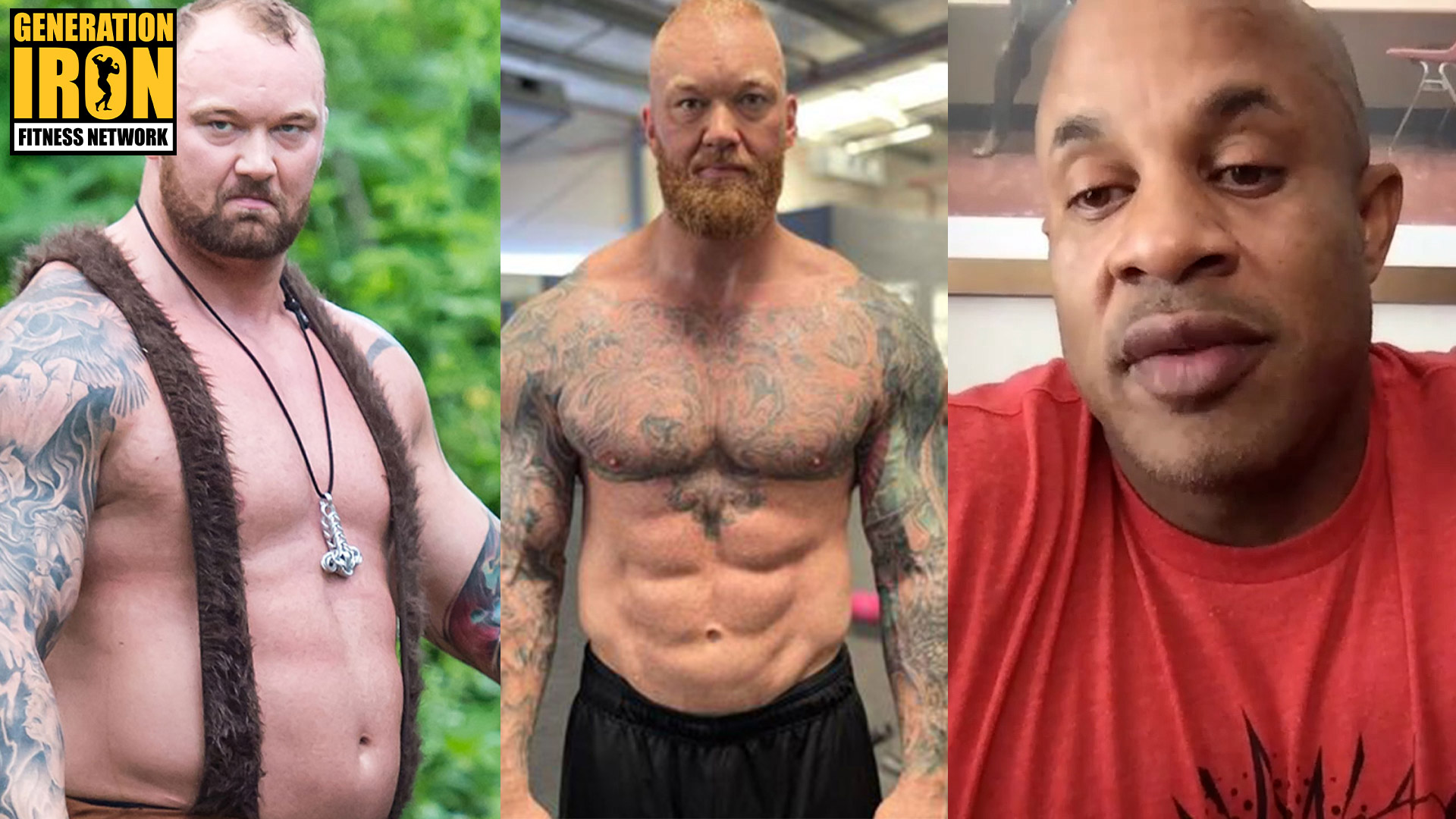
Victor Martinez Reacts: Has Hafthor Bjornsson’s Weight Loss Gone Too Far?
[embedded content]
Victor Martinez reacts to Hafthor Bjornsson’s insane weight loss and shred.
Hafthor Bjornsson used to be best known as a powerhouse strongman and as “The Mountain” in Game Of Thrones. But perhaps now he is getting most attention for his turn towards boxing – and the massive amount of weight he’s shredded off in the process. The transformation has certainly turned a lot of heads, but there are also bodybuilding and strongman fans who are less excited about seeing his signature size downgrade. Some even believe that he has taken the weight loss too far. In our latest GI Exclusive, Victor Martinez reacts to Hafthor Bjornsson’s weight loss and also to fan complaints about his transformation.
Victor Martinez is no stranger to getting negative attention for massive weight loss. Much earlier in his pro bodybuilding career, Martinez was incarcerated. This prevented him from maintaining his bodybuilding lifestyle fully. He dramatically lost weight and had trouble getting back to proper size in his first year upon being released. That struggle was captured in part during the filming of our original Generation Iron documentary.
So we thought Victor Martinez would be the perfect person to ask about the recent developments with Hafthor Bjornsson. The situations are different but the outcome is the same. Bjornsson decided to retire from strongman and turn to boxing. More specifically to fight fellow strongman Eddie Hall. This has yet to happen due to Hall suffering some injuries. Meanwhile, Bjornsson has stuck the course and committed to other boxing matches as he continues to improve.
As part of this change in career, Hafthor Bjornsson decided to trim down and get much more conditioned. He understood that his massive size was not best suited for winning boxing matches. But some fans are upset with just how small he’s become – especially compared to Eddie Hall. Hall had lost weight as well – but mostly maintained his larger size while also gaining conditioning.
Victor Martinez believes that bodybuilding and strongman fans are coming only from a selfish place when they criticize Bjornsson. In fact, Martinez is convinced that Bjornsson’s weight loss is not only best for his boxing career – but healthier for his overall future. Bodybuilding and strongman fans don’t care as much about his boxing exploits – and are looking at his physique only through their subjective lens of the sports of bodybuilding ands strongman.
There’s nothing wrong with this exactly. But Victor Martinez wants fans to understand that Hafthor Bjornsson is in a new stage of his life and career. This statement matches something Jujimufu stated to us in a previous GI Exclusive interview as well. If Bjornsson can succeed as a boxer – he will always still have his former legacy as a successful strongman. Losing the weight does not reduce his legacy. In fact, succeeding in two different sports is an even better lifetime legacy. If he can also improve his overall health during the process – that’s even better still.
So what is Victor Martinez’s overall reaction to Hafthor Bjornsson’s transformation? He’s impressed. That kind of transformation and dedication to conditioning is not easy. And was the smart thing to do for his health and his boxing future. Martinez may be a bodybuilder at heart – but he can appreciate the hard work and results of someone else on their own separate journey.
You can watch Victor Martinez’s full comments on Hafthor Bjornsson’s physique transformation in our latest GI Exclusive interview segment above!
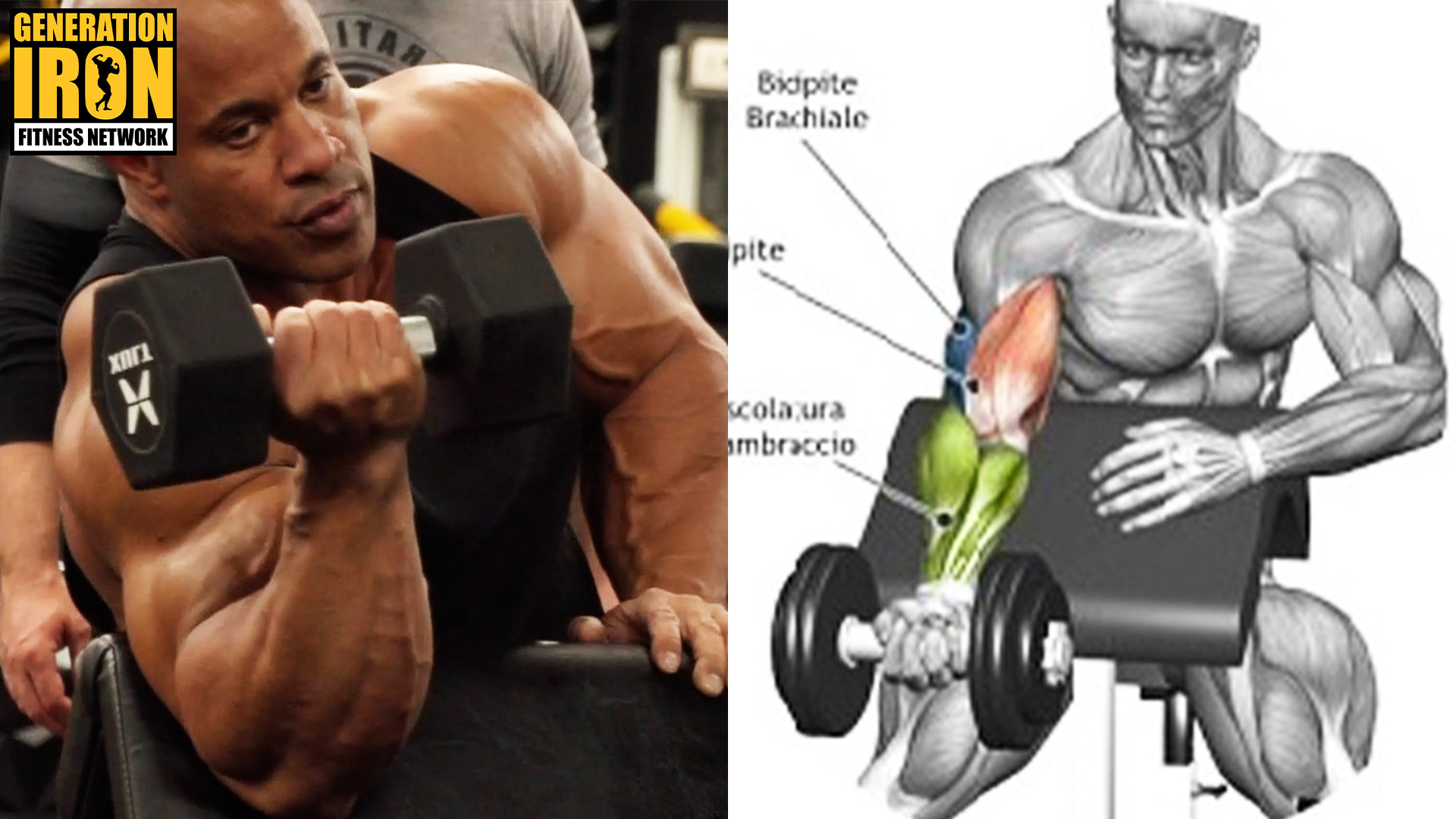
Victor Martinez’s Bicep Workout | Training With Victor Martinez (Part 3)
[embedded content]
Victor Martinez’s in-depth bicep training guide.
Victor Martinez is an iconic pro bodybuilder and legend in the sport. He is considered by many to have one of the greatest physiques of the 2000s era of bodybuilders. In 2007, in a controversial decision, he nearly beat Jay Cutler for the Mr. Olympia title. That’s why we met up with Martinez at the Generation Iron Personal Training Gym for an epic workout. In this GI Exclusive, Victor Martinez ends this 3-part training series with a powerhouse bicep workout guide.
It’s easy enough to find a training routine online – but the real work comes in knowing the details. A list of exercises, sets, and reps is simply the most basic foundation for a successful workout. Knowing proper form, full movement, and specific tips can transform a workout from good to great. It’s what separates a “normal” in shape person from a shredded bodybuilder.
That’s why Victor Martinez met up with Vlad Yudin to go through the ultimate gauntlet of a workout. In part two of our training mini series with Martinez, he puts Vlad through the paces and shares important tips on how to optimize your routine. A workout sheet is one thing – but this video guide will give you play-by-play examples of how to actually perform like a pro bodybuilder.
This exercise is an immediate follow up to Victor Martinez’ in-depth chest training and shoulder training guide and should be completed within the same session.
Victor Martinez’s Bicep Training Workout
As mentioned above, this bicep training session immediately follows a full chest day workout alongside half of a shoulder workout. Victor Martinez prefers to combine muscle groups in his workout sessions that he believes create the best combo for most effective progress. He combines chest with shoulders because chest exercises often indirectly workout your shoulders – then expands to an arm workout for a more complete upper body training session.
Exercises
Sets
Reps
Cable Bicep Curls (Warmup)
3
20-15-12
Barbell Curls
4
10-12
Dumbbell Curls
3
12
Cable Hammer Curls
3
15
When it comes to weight, that’s impossible to recommend broadly. Each individual has different limits on how much weight to push. Ultimately, you want to lift enough weight to complete all three sets for each exercise. By the end of the final set for each – you should barely be able to finish. It may take trial and error to begin with – but you’ll ultimately find a sweet spot this will be more than enough to exhaust your muscles completely.
Victor Martinez also has some tips on how to ensure you’re fully pushing yourself with each workout session. For every exercise, make sure you always hit the number of reps you are shooting for. On the final set, if you can’t hit, let’s say, 15 reps. Don’t stop. Drop weight so you can hit that number. That’s where real muscle growth comes from – pushing beyond your first perceived limit. In this video, Martinez explains there are two ways to get intensity when you are started to get exhausted – dropsets or supersets.
Cable Bicep Curls (Warm Up)
Victor Martinez starts this segment of his workout program with another warm up. This consists of cable bicep curls – three sets. The first set is 20 reps. The second set is 15 reps. And the last set is 12 reps.
During this warm up, Victor Martinez also shares some sound advice about how to prepare for a workout. He suggests never training on a completely empty stomach. If you are someone who trains in the morning – always make sure to have some food beforehand. If you train fasted – you will simply lose weight. If that’s your goal – that’s great. But if you are looking to build muscle, Martinez always recommends getting some food in you before hitting the gym.
Barbell Curls
For the first official exercise after the warm up, Victor Martinez recommends traditional barbell bicep curls. Four sets of 10-12 reps. During this workout, Martinez shares a tip for getting an extra bit of work into the workout. When the weight is lighter – Martinez likes to hold the peak of the movement for a extra split second to get more of a squeeze. He emphasizes only doing this on lighter weight. With heavier loads this can risk injuring your tendon.
Dumbbell Curls
For the second exercise, Victor Martinez moves onto traditional dumbbell bicep curls. He uses a bicep curl bench to help prevent cheating or loose form. For this exercise he recommends three sets of 12 reps.
During this exercise, Martinez reiterates the importance of always hitting the correct number of reps. Even on the final set if you feel fully exhausted, do not give up early. This leads to slower or sometimes no improvement in muscle gains. Always drop weight and complete the max reps.
Cable Hammer Curls
Victor Martinez ends his bicep workout focusing on cable hammer curls. For this exercise, Martinez suggests three sets of 15 reps. While performing this workout, Martinez emphasizes focusing on safety, even when using machines in the gym. Always check your equipment to make sure it’s working properly to avoid injury.
He tells a story of injuring his quad when he was just 20 years old. He was lifting on a leg press machine that had misaligned ball bearings. It caused the machine to stop suddenly half way through a press – causing a tear in his quad and disabling him from full training for over a year.
Wrap Up
That about wraps up Part 3 of Victor Martinez’s upper body training routine. Make sure to watch the GI Exclusive training video above to get complete play-by-play tips on each exercise. Soon you’ll transform your workout into a pro level routine.
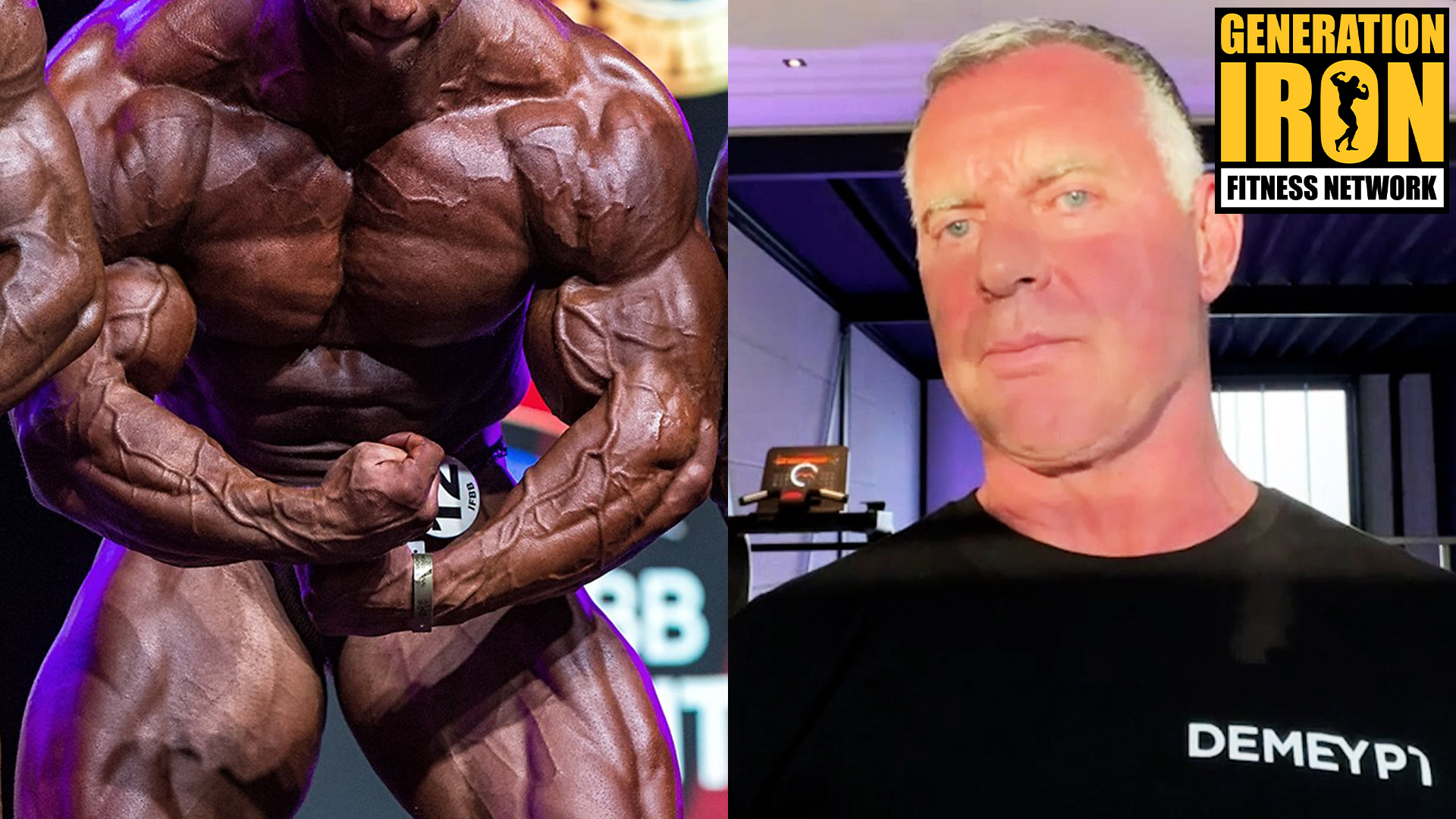
Berry De Mey Wants More Transparent Rules To Make Bodybuilding Less Subjective
[embedded content]
Berry De Mey believes there are rules that can be tweaked to make judging “easier” and “less subjective.”
Pro bodybuilding in the IFBB has a strict set of rules and criteria that all competitors must abide by. These are the guidelines that help a bodybuilder understand what their goals should be to earn victory at a competition. But ultimately, behind all of the rules remains some level of subjectivity. An “aesthetic” body and a “conditioned physique” can fall within the eye of the beholder (within reason). This leads to fans, experts, and even sometimes athletes to disagree with judges decisions. In our latest GI Exclusive interview, Berry De Mey opens up on how he believes judging rules can be changed to help make pro bodybuilding less subjective.
Every sport has some element of subjectivity to it. There’s always a referee call that fans won’t agree with. And even times in sports with playback where a call is outright wrong – but the ref didn’t see the event from the right perspective. Some sports, like pro football allow for a flip on a ref’s call after playback. Others, like pro soccer, often don’t flip a ref’s call even if the video playback reveals error. To some degree, no sport can avoid subjectivity.
Bodybuilding faces this fact beyond those simple examples. Bodybuilding is about judging the look of a physique and not about scoring goals. This adds even more unavoidable subjectivity. But is it possible for the sport as we know it today to improve and avoid some of this pitfalls? Berry De Mey seems to think so. He thinks that the sport can always improve to help make the sport more transparent and, in some ways, remove more of the subjectivity from the sport.
To be clear, Berry De Mey doesn’t not fall into the camp of individuals who think that there are “politics” or conflicts of interest in the judging system. De Mey has never seen it himself and bodybuilding has given him an entire life and career. He’s grateful for it and sees no wrong-doing in the current set up of rules and judging.
That being said, because he is passionate about the sport, he is always open to seeing it improve. And while he has not experienced conflict of interest first hand – he’s also open to being somewhat naive to things happening behind the scenes. Or at the very least, he’s aware there are always some athletes or fans who disagree with the judges decision at a major pro bodybuilding show.
Berry De Mey isn’t oblivious. He’s aware there will always be a bodybuilder unhappy with the results. It’s because they want to win and believe in themselves and their accomplishments. But De Mey is also aware that sometimes, bodybuilders are legitimately unsure why they lost. He’s been experiencing this first hand as he coaches Tavi Castro – a phenomenal Classic Physique bodybuilder who has struggled to earn his pro card.
Of course, there is always the possibility, no matter how good an athlete is, that there’s someone better. But in Berry De Mey’s eyes, Tavi Castro clearly has a physique that deserves a pro card and a place to compete amongst the world’s best. He thinks this, alongside other athletes and fans somewhat consistently disagreeing with judges results – means something can be improved to bring more clarity to everyone involved in the sport.
Berry De Mey doesn’t go into any specific detail on what could be changed. But he clearly states that he thinks there are clear measures that can be taken to “make judging easy.” He uses the word “transparency” to describe such changes. It would seem that De Mey believes that more clear and detailed scoring rules will leave less room for doubt among the fanbase, athlete base, and everyone involved in bodybuilding.
There’s no way to remove the subjectivity of this sport. Bodybuilding has been and always will be about judging the visual look of the human body. That can never be full objective. Berry De Mey is aware of this – but believes the pursuit of further improving the judging criteria might help lead to happier athletes and fans. Do you agree?
You can watch Berry De Mey’s full comments on training Tavi Castro and the transparency of judging in our latest GI Exclusive interview segment above.

The Most Dangerous Substances In Bodybuilding Today According To Dr. Testosterone
[embedded content]
Dr. Testosterone breaks down the absolute most dangerous substances used in bodybuilding today.
For almost as long as modern bodybuilding has existed, there has been an ongoing conversation about substance use in the sport. It’s widely known that many competitors use steroids and other PEDs to enhance performance. What seems to be further up for debate is just how dangerous these substances really are. But beyond the standard set of steroids, bodybuilding as a whole has engaged with other substances such as insulin, diuretics, and stimulants. In our latest GI Exclusive interview, Dr. Testosterone details the truly most dangerous substances used in bodybuilding today.
There is no doubt that steroids and similar PEDs can lead to health issues in the long term. It’s the kind of risk that many competitive bodybuilders are willing to take to achieve a new level of greatness. While we don’t want to diminish the possible ramifications of steroids, there are far more dangerous drugs used in the sport as well. That’s why we turned to Dr. Testosterone to find out more clearly which substances are the most dangerous and what kind of effects they can have on athletes.
When asked the question, Dr. Testosterone doesn’t even pause to think. Diuretics, stimulants, and insulin are far and above the most dangerous substances used in bodybuilding today. The doctor has spoken previously with us about the ramifications of diuretics in a previous segment. He’s also gone into detail about the dangers of insulin. So in this segment Dr. Testosterone dives headfirst into stimulants, how they are used in bodybuilding, and why they are so dangerous.
While not as common as other substances, bodybuilders use stimulants to help burn fat. But the problem with stimulants is that they are essentially a direct poison to the body. Looking past the detailed medical and scientific explanations of what happens to the body – the short answer is that stimulant abuse can lead to a stroke. While not always fatal, strokes can lead to very serious life altering outcomes. It can also lead to death in some cases.
Strokes can be caused by the stimulants raising your blood pressure in the brain. But that’s not the only possible negative effect. Stimulants elevate your heart rate and in some cases can cause arrhythmia. It can also constrict blood vessels eventually leading to a heart attack.
There are also other dangers of substances in bodybuilding beyond life or death situations. Sex drive is often associated with drugs like steroids. This is because of the increased testosterone that can, initially, increase sex drive. But as we had previously discussed with The Anabolic Doc, that increased sex drive eventually gives way to a complete depletion of it. Dr. Testosterone corroborates that notion – and goes into more detail as to why it happens and the many forms it can take.
This does not only take the shape of decreased desire for sex. It can also lead to making it hard or impossible for men to achieve erections. And in some extreme cases can lead to a man not being able to ejaculate at all. While not as dire as a life or death health scenario – these kinds of sex issues can cause great psychological trauma to individuals and couples in a relationship.
In addition to this, Dr. Testosterone also speaks about the possible dangers of substances when it comes to increasing aggression, agitation, and anger. While “roid rage” is vastly over-exaggerated in pop culture media, the doctor does admit that certain substances can lead to increased aggression. His recommendation? Smoke a joint to help level out your mood.
You can watch all of Dr. Testosterone’s comments on the most dangerous drugs currently in bodybuilding by watching our latest GI Exclusive interview segment above!
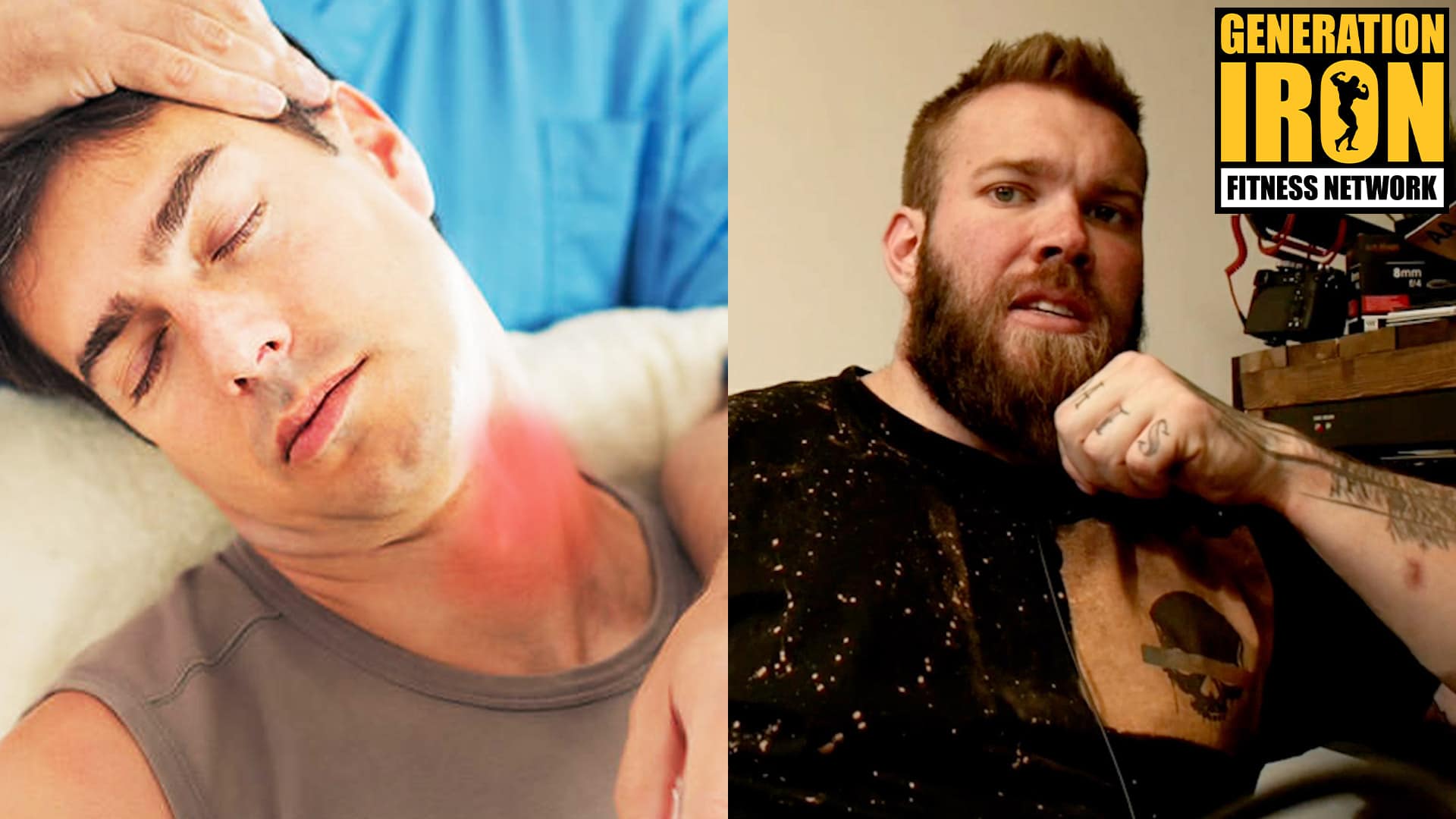
The Muscle Doc Jordan Shallow On The Stigma And Vast Misconceptions Of Chiropractors
[embedded content]
Jordan Shallow, aka The Muscle Doc, breaks down the realities behind chiropractors and their place for bodybuilders.
Dr. Jordan Shallow is probably best known in media as The Muscle Doc. He’s a Chiropractor, Strength and Conditioning Coach, and hosts the RX’D RADIO podcast. He’s a vastly knowledgable person when it comes to fitness, bodybuilding, and strength sports. Which is why we connected with him to discuss a wide range of topics. In our latest GI Exclusive, Jordan Shallow debunks myths about chiropractors and evaluates their relationship with pro bodybuilding.
The world seems to have a love/hate relationship with Chiropractors. Some people believe they are a total scam, while others swear by them. And even those in the middle seem to be disappointed if a chiropractor can’t accomplish the healing that a patient is looking for. Dr. Jordan Shallow is a chiropractor himself – and spent some time during our GI Exclusive interview detailing the realities behind the profession. He also explains why the public has such a complicated relationship to it.
During our discussion about Chiropractors, Jordan Shallow was hesitant to give any blanket advice. The reason for this, is that every patient’s body is different. There is no general rule of how, when, or why to use a chiropractor. In fact, he wouldn’t want to trust any chiropractor that did provide black and white general advice.
This is because chiropractors are a form of manual therapy vs traditional medicine. Traditional medicine is often consistent. You know what you will get when you go to a typical doctor’s visit. But a chiropractor visit can be vastly different depending on who is your doctor and what your specific needs are.
“Say what you want about conventional medicine – I know what I’m going to get when I got to a doctor’s office,” Jordan Shallow states in our interview. He continues:
“For better or worse, at least it’s consistent. Which I think is one thing people are always hesitant with when approaching manual therapies of any kind. Is the relative inconsistency, especially at the level of chiropractor, of wha the treatment is going to look like.”
Jordan Shallow points out that the consistency of a traditional doctor can be a blessing and a curse. It means both successes and failures for your ailment will be relatively consistent. Whereas manual therapies like a chiropractor can open your options and provide relief where a traditional doctor might otherwise not be able to.
That being said, there is such a wide variety of approaches a chiropractor can take – which can lead to trial and error for a patient’s experience. This can often lead to frustration for the patient. On top of this, there are pop culture references that often depict chiropractors a certain way – which might flavor the opinion of a potential patient before ever even visiting a chiropractor.
On top of this, the advent of social media has also allowed for viral videos to mislead people on chiropractors as well. Jordan Shallow mentions Tik Tok chiropractors that “Jean Claude Van Damme people’s heads off” that are more stunt than they are realistic therapies that should be used in a professional environment.
So where do chiropractors come in for bodybuilding? We’ve seen across many pro bodybuilders’ socials and also many time in our very own films that top pros often go to chiropractors. Jordan Shallow had some words on that as well. Most specifically the instrument assist soft tissue mobilization (aka the metal bar you see make pro bodybuilders scream like babies).
Jordan Shallow thinks this is a case where it’s become over-popular. That many bodybuilders believe that it’s breaking up scar tissue – which in Shallow’s opinion is impossible. If it were breaking up scar tissue, the pressure needed would also break the person’s bones. So what he’s seeing here with this popular chiropractic tactic is that a little of this bar probably helps somehow on a neurological or vascular level.
The reason it has become so popular seems to be tied into something called “dose dependent relationships.” It’s a concept that Jordan Shallow believes bodybuilders are predisposed to getting tied up into. He explains in our interview –
“Bodybuilders get tied into what’s called a dose dependent relationship. If some is good, more is better. And we’ve seen this play out to the detriment over the last six months it seems but we all fall victim to it man. When I first started training I was like, ‘Wait creatine can make me bigger? So if 20 grams is good, 40 grams must be better – you’re an idiot.”
Jordan Shallow doesn’t see this as a problem unless it gets out of hand. In fact, as is mentioned in the quote above, he thinks it’s a part of what everyone goes through as they learn more about strength and fitness.
So it would see that chiropractors, like most things, is far more complicated than can be explained in pop culture or in broad media profiling. Ultimately, it depends on each individual to decide what is right for them. And as with any medical profession – doing your own personal due diligence to ensure the person you are working with is an actual professional.
You can watch Jordan Shallow’s full comments in our latest GI Exclusive interview segment above. And make sure to stick around in the coming weeks for more excerpts from our in-depth conversation with The Muscle Doc!
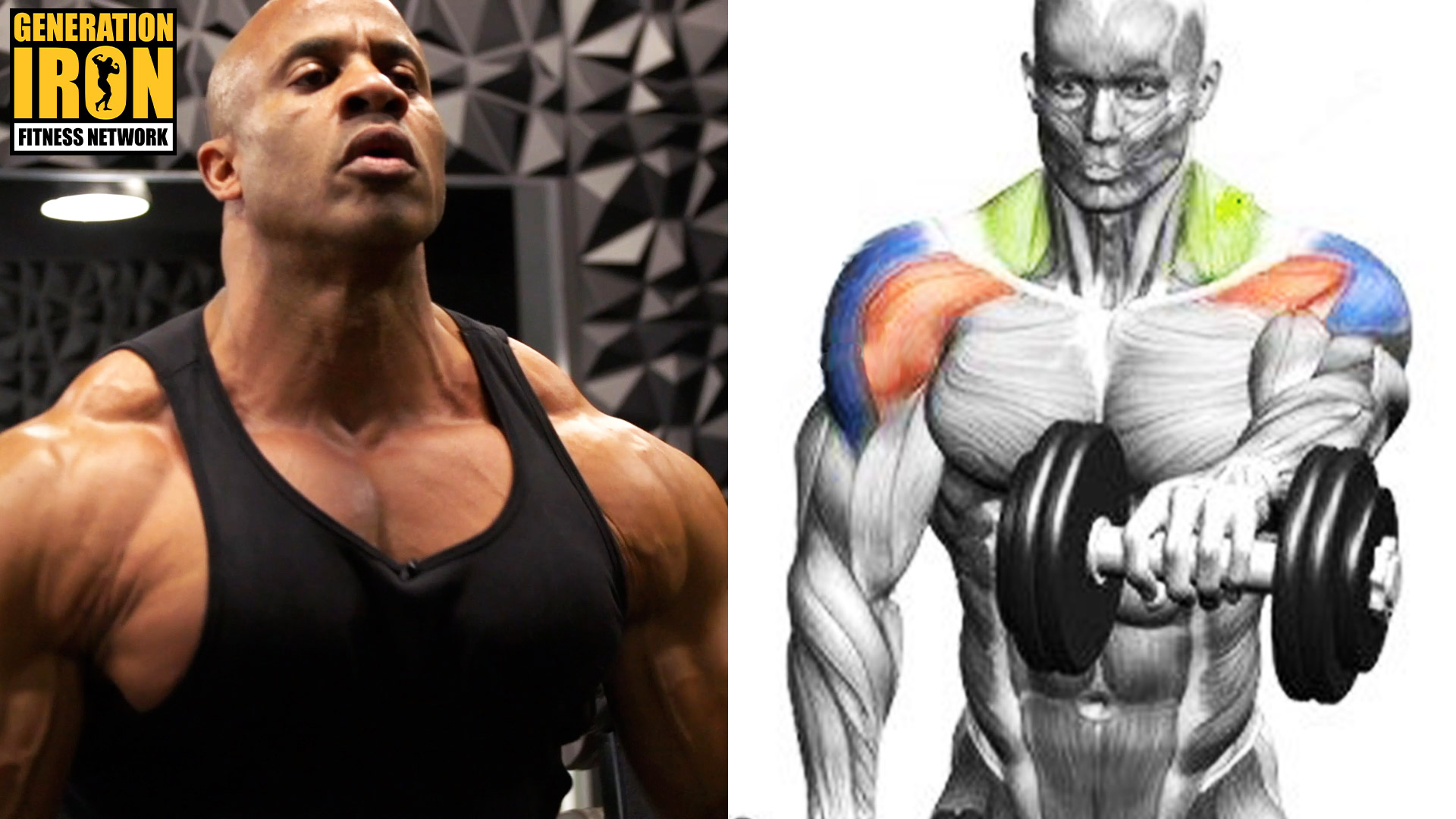
Victor Martinez’s Shoulder Workout | Training With Victor Martinez (Part 2)
[embedded content]
Victor Martinez’s in-depth shoulder training guide.
Victor Martinez is an iconic pro bodybuilder and legend in the sport. He is considered by many to have one of the greatest physiques of the 2000s era of bodybuilders. In 2007, in a controversial decision, he nearly beat Jay Cutler for the Mr. Olympia title. That’s why we met up with Martinez at the Generation Iron Personal Training Gym for an epic workout. In this GI Exclusive, Victor Martinez follows up his chest workout with a grueling shoulder training guide.
It’s easy enough to find a training routine online – but the real work comes in knowing the details. A list of exercises, sets, and reps is simply the most basic foundation for a successful workout. Knowing proper form, full movement, and specific tips can transform a workout from good to great. It’s what separates a “normal” in shape person from a shredded bodybuilder.
That’s why Victor Martinez met up with Vlad Yudin to go through the ultimate gauntlet of a workout. In part two of our training mini series with Martinez, he puts Vlad through the paces and shares important tips on how to optimize your routine. A workout sheet is one thing – but this video guide will give you play-by-play examples of how to actually perform like a pro bodybuilder.
This exercise is an immediate follow up to Victor Martinez’ in-depth chest training guide and should be completed within the same session. You can watch Part 1 of this training guide right here.
Victor Martinez’s Shoulder Training Workout
As mentioned above, this shoulder training session immediately follows a full chest day workout. Victor Martinez prefers to do a half-day shoulder workout within the same session as chest day. He does this because chest exercises often indirectly workout your shoulders. So Martinez’ weekly schedule typically consists of a full shoulder workout followed by a half shoulder workout on his chest day training.
Exercises
Sets
Reps
Side Laterals (Dropsets)
2
15
Shoulder Press
4
15
Upright Rows
4
15
Cable Pulldowns
4
15
When it comes to weight, that’s impossible to recommend broadly. Each individual has different limits on how much weight to push. Ultimately, you want to lift enough weight to complete all three sets for each exercise. By the end of the final set for each – you should barely be able to finish. It may take trial and error to begin with – but you’ll ultimately find a sweet spot this will be more than enough to exhaust your muscles completely.
Victor Martinez also has some tips on how to ensure you’re fully pushing yourself with each workout session. For every exercise, make sure you always hit the number of reps you are shooting for. On the final set, if you can’t hit, let’s say, 15 reps. Don’t stop. Drop weight so you can hit that number. That’s where real muscle growth comes from – pushing beyond your first perceived limit.
Side Laterals (Dropsets)
Since these exercises are coming after a full chest workout. So Victor Martinez recommends doing the side laterals sitting down. This prevents you from using your legs and swinging your arms. Often times, lifters will compensate when fatigued by dropping legs to “reach” the full range of motion. This cheats you out of gains and could also lead to injury.
Shoulder Press (Machine)
For the shoulder press, Victor Martinez stresses the importance of having your shoulders right under the bar. If you sit back too far you end up training more of your front delts. You also want to bring the weight down to your ears to get the full range of motion for this exercise.
You also want to avoid slouching forward with your chest caved in as you continue this exercise. This can lead to injury. It’s important to have your chest out and your back locked for this movement.
Upright Rows
For this exercise, Victor Martinez recommends holding the bar with a wide grip, bringing your hands all of the way to the edge of the weights on either side of the barbell. Your palms should be facing inward towards your body. When you perform this movement – you want to bring the bar up in front of you. Pulling the bar up close to the chest will train your traps. Watch in the video the specific difference to ensure you are targeting the right muscle.
Cable Pulldowns
For the cable pulldowns, Victor Martinez recommends doing three down and then three overhead. During this exercise, Martinez further explains why he prefers to do shoulders with chest. This is opposed to doing biceps with back training. His reasoning is that you are using so much bicep with a back workout, that you end up being too fatigued for the bicep workout afterward. You aren’t fully stimulating the muscle to maximum efficiency.
Martinez also feels this way about quads and hamstrings. If you give yourself a powerhouse quads workout and then jump into hamstrings in the same day – you won’t get the same level of effort needed to fully develop that muscle group.
Wrap Up
That about wraps up Part 2 of Victor Martinez’s upper body training routine. Next week, we’ll return to hit up the back in a new selection of exercises. Make sure to watch the GI Exclusive training video above to get complete play-by-play tips on each exercise. Soon you’ll transform your workout into a pro level routine.
Lukas Osladil Shares The Most Influential Bodybuilders That Modeled His Physique
[embedded content]
The most influential bodybuilders that helped shape Lukas Osladil’s physique.
Lukas Osladil is a bodybuilder with an incredible physique that has been competing as a pro since 2011. Beyond being pro, he’s been focusing on bodybuilding since he was 10 years old. Now Osladil is primed to be a true threat in the coming years of the sport. While there is a lot for Osladil to look forward towards – he is also looking back at the athletes who helped shape his physique. In our latest GI Exclusive, Lukas Osladil details the most influential bodybuilders that inspired his bodybuilding career.
Lukas Osladil might not be a household name yet – but his physique is starting to get noticed by many fans as he slowly rises through the ranks of pro bodybuilding. As we continue to move through a transitional passing of the guard between generations – Osladil is a name that stands out and will likely continue to place high in more and more competitions within the coming years.
That’s why during our latest video conversation, we wanted to dig deeper into his influences that shaped Osladil into the kind of bodybuilder we see on stage today. Less a list of the best bodybuilders of all time – and more a list of the specific pro bodybuilders that influenced the kind of physique Osladil wanted to create on his own body.
While not extremely surprising, first and foremost Lukas Osladil was most inspired by Arnold Schwarzenegger. In fact, he is still continually inspired by Schwarzenegger to this day. Perhaps no longer for his physique – but for the kind of brand and career he made for himself using bodybuilding. But Schwarzenegger will be the only name from the Golden Era on Osladil’s list.
In fact, Osladil goes on to say that the 90s was the best era of pro bodybuilding. Typically known by many fans today as the second Golden Era, Osladil mentions Flex Wheeler, Shawn Ray, and Kevin Levrone as big influences on his journey through bodybuilding. He details how he would read through bodybuilding magazines every single day to absorb as much information and motivation as possible.
These influences would prove paramount to Lukas Osladil turning pro. He had no trainer to work with for the entirety of his amateur career. Osladil mentions he always wanted a coach to confer with – but if he waited to find a suitable trainer, he would have never gotten started. So he took matters into his own hands, using magazines and pure passion, and sculpted his own physique using his own methods. It wasn’t until after going pro that he finally landed a coach to help him further improve.
It would seem that Lukas Osladil’s inspirations were so influential that it gave him the courage to jump into bodybuilding despite conditions not being perfect. This is a good lesson for aspiring bodybuilders. If you wait for the perfect moment to start – you might not ever really get going and miss your opportunity. Take matters into your own hands, use trial and error alongside research to forge your own path.
You can watch Lukas Osladil talk in more detail about his bodybuilding influences in our latest GI Exclusive interview segment above!
